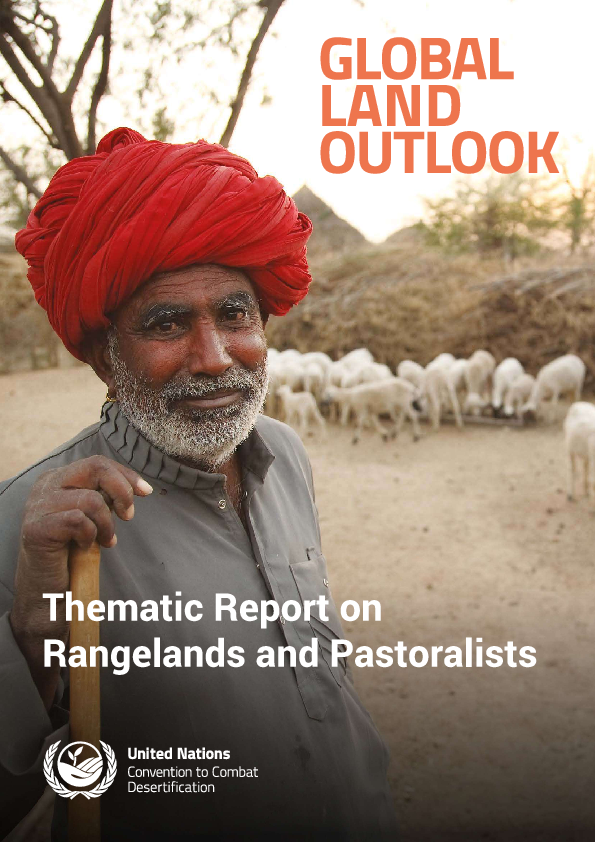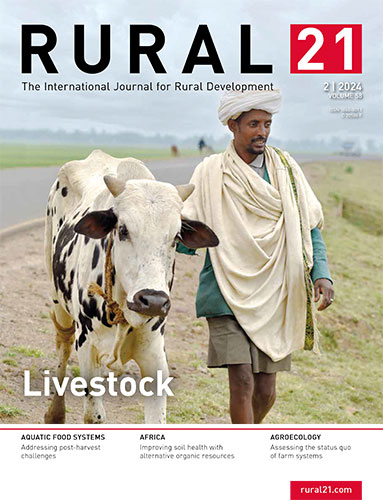- Share this article
- Subscribe to our newsletter
Global Land Outlook: Rangelands and Pastoralists
Up to 50 per cent of rangelands are degraded, according to the Global Land Outlook Thematic Report on Rangelands and Pastoralists, launched by the UN Convention to Combat Desertification (UNCCD) in May 2024.
Symptoms of the problem include diminished soil fertility and nutrients, erosion, salinisation, alkalinisation and soil compaction inhibiting plant growth, all of which contribute to drought, precipitation fluctuations and biodiversity loss both above and below the ground.
The problem is driven largely by converting pastures to cropland and other land use changes because of population growth and urban expansion, rapidly rising food, fibre and fuel demands, excessive grazing, abandonment (end of maintenance by pastoralists) and policies that incentivise overexploitation.
Rangelands constitute 54 per cent of all land cover
The rangelands category of Earth’s land cover consists mostly of the natural grasslands used by livestock and wild animals to graze and forage. It also includes savannahs, shrublands, wetlands, tundra and deserts.
Added together, these lands constitute 54 per cent of all land cover, account for one sixth of global food production and represent nearly one third of the planet’s carbon reservoir.
Two billion people – small-scale herders, ranchers and farmers, often poor and marginalised – depend on healthy rangelands world-wide.
Indeed, in many West African states, livestock production employs 80 per cent of the population. In Central Asia and Mongolia, 60 per cent of the land area is used as grazing rangelands, with livestock herding supporting nearly one third of the region’s population.
Ironically, the report underlines, efforts to increase food security and productivity by converting rangelands to crop production in mostly arid regions have resulted in degraded land and lower agricultural yields.
The report calls out “weak and ineffective governance”, “poorly implemented policies and regulations” and “the lack of investment in rangeland communities and sustainable production models” for undermining rangelands.
Protecting pastoralism
The report’s 60+ expert contributors from over 40 countries agree that past assessing of degraded rangeland world-wide – roughly 25 per cent – “significantly underestimates the actual loss of rangeland health and productivity”, which could be as much as 50 per cent.
Rangelands are often poorly understood, and a lack of reliable data undermines the sustainable management of their immense value in food provisioning and climate regulation, the report warns.
The report details an innovative conceptual approach that would enable policy-makers to stabilise, restore and manage rangelands.
The new approach is backed by experience detailed in case studies from nearly every world region, drawing important lessons from successes and missteps of rangeland management.
One core recommendation is to protect pastoralism, a mobile way of life dating back millennia which is centred on the pasture-based production of sheep, goats, cattle, horses, camels, yaks, llamas or other domesticated herbivores, along with semi-domesticated species such as bison and reindeer.
Paradigm shift
Halting the deterioration requires a paradigm shift in management at every level – from grassroots to global, the report concludes.
Achieving “land degradation neutrality” (Sustainable Development Goal 15.3) – balancing the amount and quality of healthy land to support ecosystem services and food security – also requires cross-border cooperation.
Pastoralists with generations of experience in achieving life in balance with these ecosystems should help inform this process at every step, from planning to decision-making to governance, the report notes.
Solutions must be tailored to the characteristics and dynamics of rangelands, which vary widely from arid to sub-humid environments, as seen in West Africa, India or South America.
The report notes that traditional assessment methods often undervalue the real economic contribution of rangelands and pastoralism, highlighting the need for the innovative approach recommended.
Key recommendations include:
- Integrated climate change mitigation and adaptation strategies with sustainable rangeland management plans to increase carbon sequestration and storage while boosting the resilience of pastoralist and rangeland communities
- Avoiding or reducing rangeland conversion and other land use changes that diminish the diversity and multifunctionality of rangelands, especially on indigenous and communal lands
- Designing and adopting rangeland conservation measures, within and outside protected areas, that support biodiversity above and below ground while boosting the health, productivity and resilience of extensive livestock production systems
- Adopting and supporting pastoralism-based strategies and practices that help mitigate harms to rangeland health, such as climate change, overgrazing, soil erosion, invasive species, drought and wildfires
- Promoting supportive policies, full people’s participation and flexible management and governance systems to boost the services that rangelands and pastoralists provide to the whole society
(UNCCD/ile)





Add a comment
Be the First to Comment